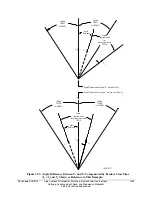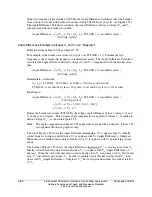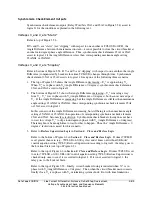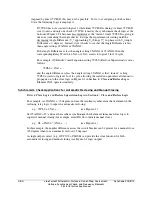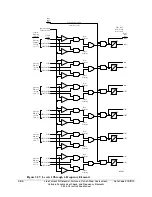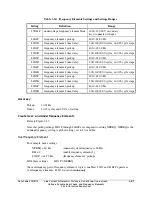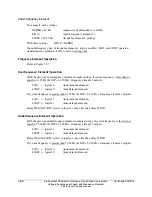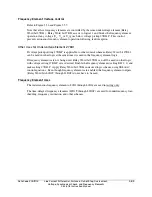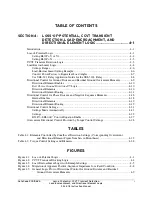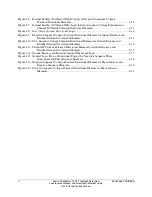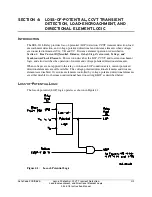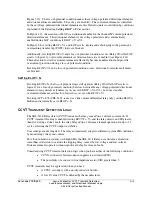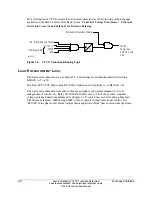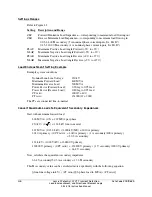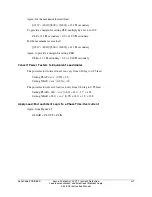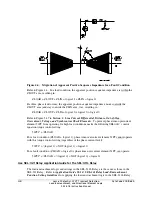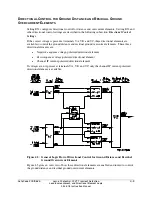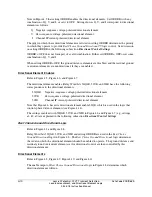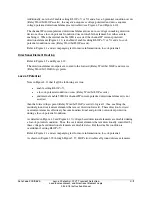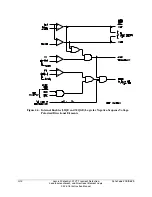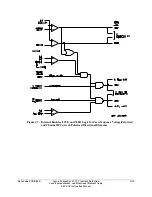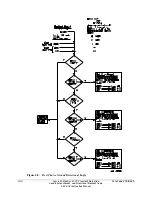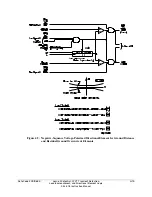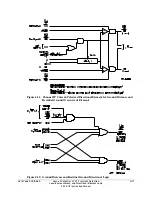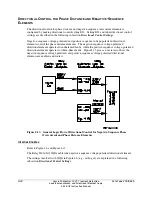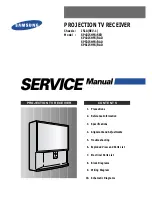
Date Code 20010625
Loss-of-Potential, CCVT Transient Detection,
4-3
Load-Encroachment, and Directional Element Logic
SEL-311L Instruction Manual
Figure 3.37). The loss-of-potential condition makes these voltage-polarized directional elements
and distance elements unreliable. Thus, they are disabled. The overcurrent elements controlled
by these voltage-polarized directional elements are disabled also (unless overridden by conditions
explained in the following
Setting ELOP = Y
discussion).
In Figure 4.11, the assertion of ILOP is an additional enable for the channel IP current-polarized
directional element. This directional element is not voltage polarized and is automatically
enabled during LOP conditions if ELOP = Y or Y1.
In Figure 5.8, if setting ELOP = Y1 and LOP asserts, keying and echo keying in the permissive
overreaching transfer trip (POTT) logic are blocked.
Additionally, if setting ELOP = Y and a loss-of-potential condition occurs (Relay Word bit LOP
asserts to logical 1), overcurrent elements set direction forward are enabled (see Figure 4.12).
These direction forward overcurrent elements effectively become nondirectional and provide
overcurrent protection during a loss-of-potential condition.
If setting ELOP = Y1 and a loss-of-potential condition occurs, directional overcurrent elements
are blocked.
Setting ELOP = N
If setting ELOP = N, the loss-of-potential logic still operates (Relay Word bit LOP asserts to
logical 1 for a loss-of-potential condition) but does not disable any voltage-polarized directional
elements or any distance elements (as occurs with ELOP = Y or Y1), nor does it enable
overcurrent elements set direction forward (as occurs with ELOP = Y).
If setting APP = 87L (SEL-311L is used as a line current differential relay only), setting ELOP is
hidden and is internally set to ELOP = N.
CCVT T
RANSIENT
D
ETECTION
L
OGIC
The SEL-311L Relay detects CCVT transients that may cause Zone 1 distance overreach. If
CCVT transient blocking is enabled (setting ECCVT = Y), and the relay detects an SIR greater
than five during a Zone 1 fault, the relay delays Zone 1 distance element operation for up to 1.5
cycles, allowing the CCVT output to stabilize.
User settings are not required. The relay automatically adapts to different system SIR conditions
by monitoring voltage and current.
For close-in faults on systems with high SIRs, the SEL-311L Relay uses distance-calculation
smoothness detection to override the tripping delay caused by low voltage and low current.
Distance elements operate without significant delay for close-in faults.
Consider using CCVT transient detection logic when you have either of the following conditions:
v
CCVTs with active ferroresonance-suppression circuits (AFSC)
v
The possibility of a source-to-line impedance ratio (SIR) greater than 5
CCVT transients may be aggravated when you have:
v
A CCVT secondary with a mostly inductive burden
v
A low C-value CCVT as defined by the manufacturer
Summary of Contents for SEL-311L
Page 6: ......
Page 8: ......
Page 26: ......
Page 54: ......
Page 144: ......
Page 216: ......
Page 252: ......
Page 302: ......
Page 338: ......
Page 480: ......
Page 484: ......
Page 486: ......
Page 502: ......
Page 532: ...12 28 Standard Event Reports and SER Date Code 20010625 SEL 311L Instruction Manual 4 ...
Page 552: ......
Page 554: ......
Page 574: ......
Page 576: ......
Page 596: ......
Page 602: ......
Page 628: ......
Page 656: ......
Page 662: ......
Page 664: ......
Page 688: ......
Page 700: ......
Page 716: ......
Page 722: ......
Page 734: ......

